Results
-
 £2.50
£2.50It's the Holiday Season (SATB Choral Octavo) - Emerson, Roger
This medley of popular holiday songs is a sparkling selection for a concert finale or community events and may be performed with choir alone or combined with a concert band and optional string orchestra. Includes: Happy Holiday, The Holiday Season, Let It Snow! Let It Snow! Let It Snow!
Estimated dispatch 7-14 working days
-
 £38.50
£38.50It's the Holiday Season (String Pak - Score and Parts) - Moss, John
This medley of popular holiday songs is a sparkling selection for a holiday concert finale or community event. For added effect combine this with your school's choir and band for a truly magical production. Includes: Happy Holiday, The Holiday Season and Let It Snow! Let It Snow! Let It Snow.
Estimated dispatch 7-14 working days
-
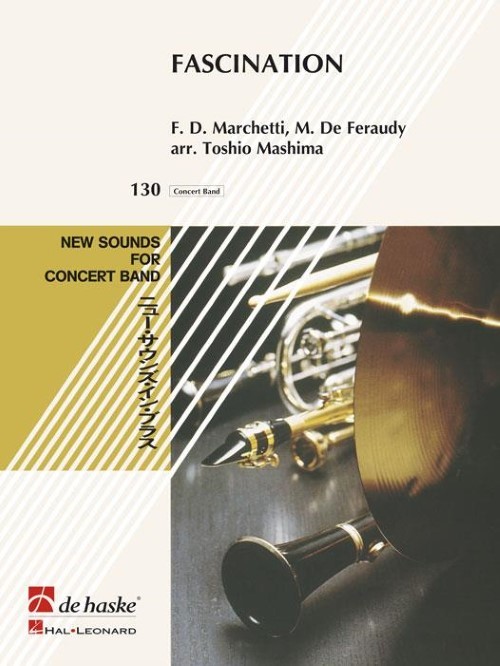 £104.99
£104.99Fascination (Concert Band - Score and Parts) - Mashima, Toshio
The melody of Fascination was composed in 1905 by Dante Pilade"Fermo" Marchetti. In the 1930's it was successfully performed in French and English and in 1957 it again became famous when it was used in the soundtrack of the American movie Love in the Afternoon. This piece has been loved by many generations and Toshio Mashima's arrangement will without doubt bring joy to all members of your audience!Duration: 3:30
Estimated dispatch 7-14 working days
-
 £50.50
£50.50Dervish (Concert Band - Score and Parts) - Ford, Ralph
It twirls, it whirls, it's just right for your very first concert! Dervish, dedicated to the composer's young daughters, is all the energy and lively spirit captured in this original work. If you can't tame the energy of your upbeat band, you can easily channel it into this dynamic new work.Duration: 1:30
Estimated dispatch 7-14 working days
-
 £248.99
£248.99Odysseia (Concert Band - Score and Parts) - Aulio, Maxime
Washed up on the Phaeacian shore after a shipwreck, Odysseus is introduced to King Alcinous. As he sits in the palace, he tells the Phaeacians of his wanderings since leaving Troy. Odysseus and his men fi rst landed on the island of the Cicones where they sacked the city of Ismarus. From there, great storms swept them to the land of the hospitable Lotus Eaters. Then they sailed to the land of the Cyclopes. Odysseus and twelve of his men entered the cave of Polyphemus. After the single-eyed giant made handfuls of his men into meals, Odysseus fi nally defeated him. He got him drunk and once he had fallen asleep, he and his men stabbed a glowing spike into the Cyclop's single eye, completely blinding him. They escaped by clinging to the bellies of some sheep. Once aboard, Odysseus taunted the Cyclop by revealing him his true identity. Enraged, Polyphemus hurled rocks at the ship, trying to sink it. After leaving the Cyclopes' island, they arrived at the home of Aeolus, ruler of the winds. Aeolus off ered Odysseus a bag trapping all the strong winds within except one - the one which would take him straight back to Ithaca. As the ship came within sight of Ithaca, the crewmen, curious about the bag, decided to open it. The winds escaped and stirred up a storm. Odysseus and his crew came to the land of the cannibalistic Laestrygonians, who sank all but one of the ships. The survivors went next to Aeaea, the island of the witch-goddess Circe. Odysseus sent out a scouting party but Circe turned them into pigs. With the help of an antidote the god Hermes had given him, Odysseus managed to overpower the goddess and forced her to change his men back to human form. When it was time for Odysseus to leave, Circe told him to sail to the realm of the dead to speak with the spirit of the seer Tiresias. One day's sailing took them to the land of the Cimmerians. There, he performed sacrifi ces to attract the souls of the dead. Tiresias told him what would happen to him next. He then got to talk with his mother, Anticleia, and met the spirits of Agamemnon, Achilles, Patroclus, Antilochus, Ajax and others. He then saw the souls of the damned Tityos, Tantalus, and Sisyphus. Odysseus soon found himself mobbed by souls. He became frightened, ran back to his ship, and sailed away. While back at Aeaea, Circe told him about the dangers he would have to face on his way back home. She advised him to avoid hearing the song of the Sirens; but if he really felt he had to hear, then he should be tied to the mast of the ship, which he did. Odysseus then successfully steered his crew past Charybdis (a violent whirlpool) and Scylla (a multiple-headed monster), but Scylla managed to devour six of his men. Finally, Odysseus and his surviving crew approached the island where the Sun god kept sacred cattle. Odysseus wanted to sail past, but the crewmen persuaded him to let them rest there. Odysseus passed Circe's counsel on to his men. Once he had fallen asleep, his men impiously killed and ate some of the cattle. When the Sun god found out, he asked Zeus to punish them. Shortly after they set sail from the island, Zeus destroyed the ship and all the men died except for Odysseus. After ten days, Odysseus was washed up on the island of the nymph Calypso.
Estimated dispatch 7-14 working days
-
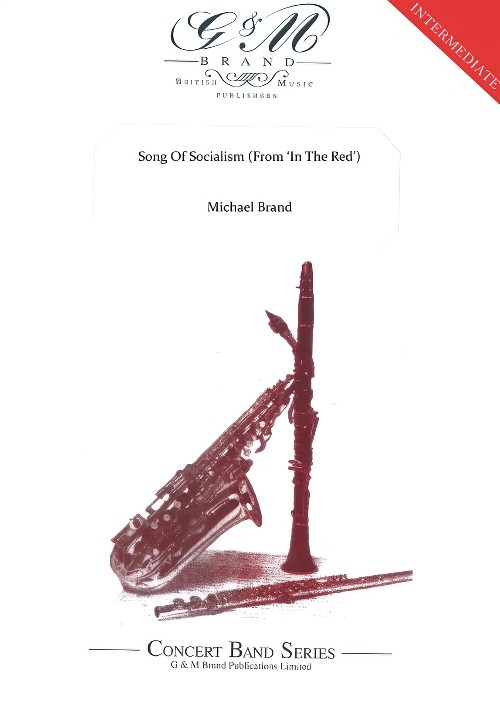 £74.95
£74.95Song Of Socialism (From In The Red) (Concert Band - Score and Parts) - Brand, Michael
In the Red is an original brass band musical by Brand, Michael and Ian Chippendale. It is based on Robert Tressell's famous socialist novel, The Ragged-Trousered Philanthropists, which describes the trials and tribulations, the humour and the marriages of working-class life in Edwardian England. This powerful book has been allied to a powerful score and the show ends with the show's hero, Will Easton, exorting all the working men - painter and decorators - to embrace socialism and overthrow the bosses. In this Song of Socialism, the men start marching to a new destiny. It never happened in England of course, but it did elsewhere! The composer has now arranged this stirring march for Concert Band
Estimated dispatch 7-14 working days
-
 £14.95
£14.95Song Of Socialism (From In The Red) (Concert Band - Score Only) - Brand, Michael
In the Red is an original brass band musical by Brand, Michael and Ian Chippendale. It is based on Robert Tressell's famous socialist novel, The Ragged-Trousered Philanthropists, which describes the trials and tribulations, the humour and the marriages of working-class life in Edwardian England. This powerful book has been allied to a powerful score and the show ends with the show's hero, Will Easton, exorting all the working men - painter and decorators - to embrace socialism and overthrow the bosses. In this Song of Socialism, the men start marching to a new destiny. It never happened in England of course, but it did elsewhere! The composer has now arranged this stirring march for Concert Band
Estimated dispatch 7-14 working days
-
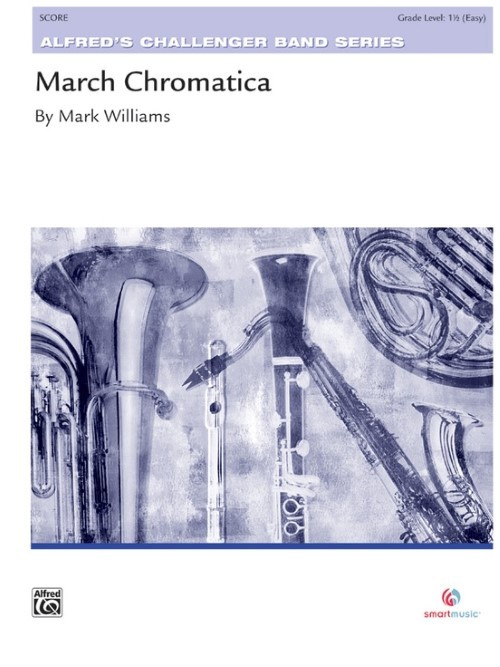 £49.95
£49.95March Chromatica (Concert Band - Score and Parts) - Williams, Mark
Destined to become a standard of the school band repertoire, the melodies of this classic old-time 6/8 march are based on the chromatic scale. In fact, the melodies and countermelodies in the "trio" section are pure chromatic scales (moving in opposite directions), and the superb harmonization makes it sound fantastic. You have to hear it to believe it! Duration: 2.15
Estimated dispatch 7-14 working days
-
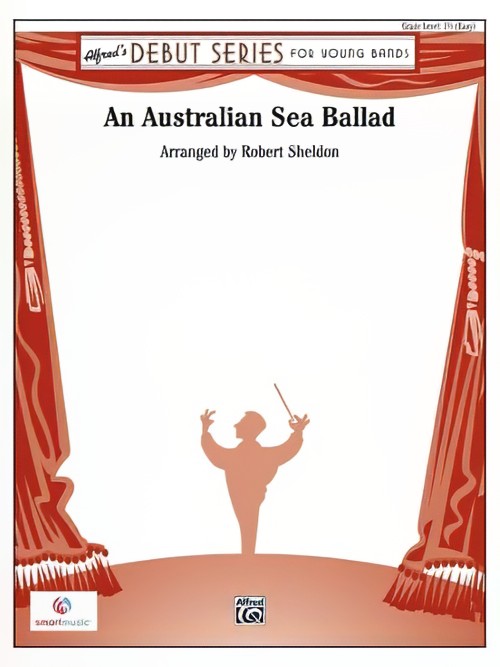 £48.95
£48.95An Australian Sea Ballad (Concert Band - Score and Parts) - Sheldon, Robert
The Australian folk song "Catalpa" was inspired by the escape of Irish prisoners from a jail in Freemantle, Western Australia in 1876. It is said that the song became so popular in area pubs that it was banned and anyone caught singing it would be arrested. This beautiful setting allows for the utmost blend and sonority of the full band and provides a wonderful contrasting moment in any concert program. Duration: 3.00
Estimated dispatch 7-14 working days
-
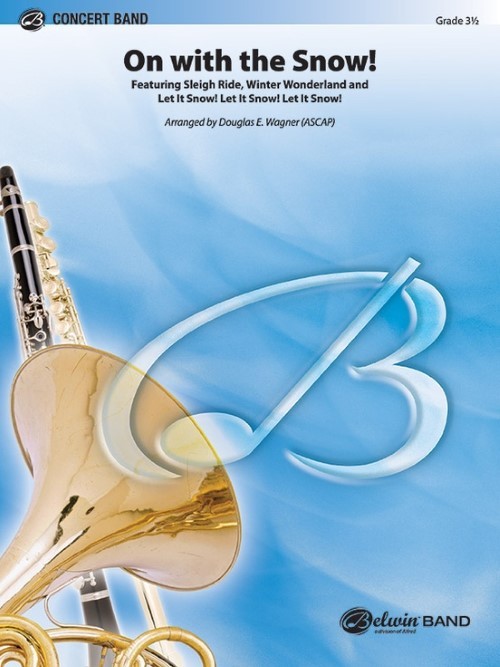 £84.50
£84.50On with the Snow! (Vocal or Instrumental Solo with Concert Band - Score and Parts) - Wagner, Douglas E.
Three Christmas pop classics are seamlessly woven together in a delightful musical "change of pace" for your winter concert by Douglas E. Wagner. Featuring "Sleigh Ride," "Winter Wonderland" and "Let It Snow! Let It Snow! Let It Snow," the arrangement is designed to highlight your vocal soloist (or with optional instrumental solo for trumpet or alto saxophone). Not technically difficult, and a guaranteed audience pleaser. Duration: 2.30
Estimated dispatch 7-14 working days
